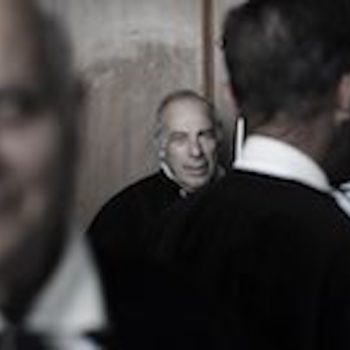Santu Srabadoi (in Sardinian language) is the largest temporary religious village in Sardinia.
The village is composed of a quadrilateral of small houses made of sandstone or clay bricks (“Ladrini”; in Sardinian language), typical of the area. Small doors and colorful gates, thick and ancient walls, and a small population (the village is populated only at the end of the summer season)
make this village worthy of a western film environment, so much so that, less than fifty years ago, it was used as a film set, complete with saloons, sheriffs, colts and horses.
As already mentioned, the village is uninhabited but is populated at the end of summer when it becomes the scene of the “race of the barefoot”;, one of the religious festivals most felt by the inhabitants of Cabras that takes place on the first Sunday of September: hundreds of men dressed in white clothes and strictly barefoot, bring the statue of San Salvatore, traversing many kilometers, from San Salvatore to Cabras, respecting a tradition handed down from generation to generation.
During this festival the village is in celebration: roasted fish, roe, meat and sweets are offered
to locals and tourists who are made part of these great celebrations.
San Salvatore is also well known for its church, built in the eighteenth century, which stands above a hypogeum of pre-Nuraghic origin dedicated to the cult of water and entirely carved into the rock, which worshiped Venus, Mars, and Hercules Salvatore during Roman times.
>> How to get to San Salvatore
Leaving from hotel Aquae Sinis get out of the town through Via Tharros; at the intersection follow the signs for San Giovanni di Sinis and continue along the provincial road 6 for 8 km. At this point on your right you will find the signs for the religious village of San Salvatore, turn and continue until you reach the ancient kiosk of the village. From the kiosk continue on foot for a few meters inside the village until you reach the church.
Recommended means : car, motorcycle or bike


 From the terrace of Dimora Laguna, we have identified three visual cones in which you have the greatest chance of watching local species. Only during specific hours of the day is it possible to observe the birdlife depending on the changing seasons.
From the terrace of Dimora Laguna, we have identified three visual cones in which you have the greatest chance of watching local species. Only during specific hours of the day is it possible to observe the birdlife depending on the changing seasons.


